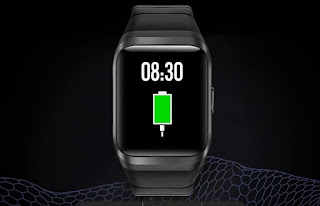MediaTek Helio P70 12nm SoC with multi-core AI processing, UFS 2.1 storage & LPDDR4X RAM support, Dual 4G VoLTE connectivity announced
MediaTek has announced the Helio P70 SoC. It is built with TSMC’s 12nm FinFET technology, same as the predecessor, but this comes with multi-core APU operating at up to 525 MHz for fast and efficient edge-AI processing. The company said that the AI engine delivers a 10-30% AI processing boost compared to the Helio P60. The Helio P70 can support even more complicated AI applications such as human pose detection.
It has ARM Cortex-A73 cores clocked at up to 2.1GHz, and four ARM Cortex-A53 cores clocked at up to 2.0GHz. These are arranged in a big.LITTLE configuration, while the SoC also features an ARM Mali-G72 MP3 GPU that's clocked up to 900MHz, which promises a 13% performance improvement. In popular games that frequently generate a heavy load across the SoC, the P70 provides 7% better DOU and up to 35% lower power versus the P60. MediaTek's exclusive CorePilot 4.0 technology manages how tasks are assigned between processing resources, with a power management focus that's on maintaining a sustainable, fast user experience through thermal management, UX monitoring and Energy Aware Scheduling (EAS+).
It can support 20:9 displays at Full HD+ resolution. The Helio P70 SoC can support LPDDR3 and LPDDR4X RAM, it can support Up to 8GB (LPDDR4x) and Up to 4GB (LPDDR3) RAM with 1X LPDDR3 933MHz, 2X LPDDR4x Up to 1800MHz frequency. It can support eMMC 5.1 and UFS 2.1 storage.
In terms of cameras, it can support 24MP + 16MP or up to 32MP camera. It can capture Up to 32MP @ 30fps with ZSD or 16MP @ 90fps. The Helio P70 SoC can support 4K video recording. the P70 is unique among peers in its focus on real-time HDR capture, recording and processing and its hardware-driven ability to process RAW HDR images. Other HDR-centric enhancements includes RAW-domain multi-frame HDR capture and Zig-Zag HDR.
In terms of connectivity, the Helio P70 SoC has Dual 4G VoLTE, Bluetooth 4.2, FM Radio, GNSS, Wi-Fi connectivity. It can support Cat-7 DL / Cat-13 UL.
The company said that the Helio P70 is in production now, and is expected to be available in smartphones by November of this year.
Source
It has ARM Cortex-A73 cores clocked at up to 2.1GHz, and four ARM Cortex-A53 cores clocked at up to 2.0GHz. These are arranged in a big.LITTLE configuration, while the SoC also features an ARM Mali-G72 MP3 GPU that's clocked up to 900MHz, which promises a 13% performance improvement. In popular games that frequently generate a heavy load across the SoC, the P70 provides 7% better DOU and up to 35% lower power versus the P60. MediaTek's exclusive CorePilot 4.0 technology manages how tasks are assigned between processing resources, with a power management focus that's on maintaining a sustainable, fast user experience through thermal management, UX monitoring and Energy Aware Scheduling (EAS+).
It can support 20:9 displays at Full HD+ resolution. The Helio P70 SoC can support LPDDR3 and LPDDR4X RAM, it can support Up to 8GB (LPDDR4x) and Up to 4GB (LPDDR3) RAM with 1X LPDDR3 933MHz, 2X LPDDR4x Up to 1800MHz frequency. It can support eMMC 5.1 and UFS 2.1 storage.
In terms of cameras, it can support 24MP + 16MP or up to 32MP camera. It can capture Up to 32MP @ 30fps with ZSD or 16MP @ 90fps. The Helio P70 SoC can support 4K video recording. the P70 is unique among peers in its focus on real-time HDR capture, recording and processing and its hardware-driven ability to process RAW HDR images. Other HDR-centric enhancements includes RAW-domain multi-frame HDR capture and Zig-Zag HDR.
Camera features:
(AI) Facial Detection & Scene Detection; Hardware Warping Engine (EIS); Anti-Blooming Engine; MEMA 3DNR; Multi-Frame Noise reduction; Real-time HDR recording and viewing; Zig-Zag HDR; RAW-domain multi-frame HDR; PDAFIn terms of connectivity, the Helio P70 SoC has Dual 4G VoLTE, Bluetooth 4.2, FM Radio, GNSS, Wi-Fi connectivity. It can support Cat-7 DL / Cat-13 UL.
The company said that the Helio P70 is in production now, and is expected to be available in smartphones by November of this year.
Source







Comments
Post a Comment